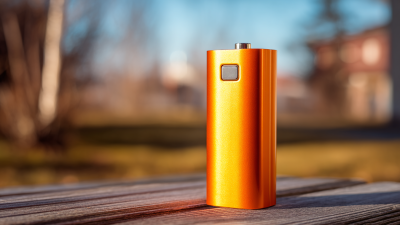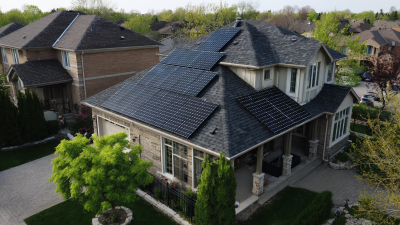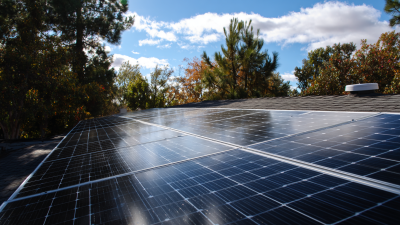MH Energy Your Better Solar and Energy Partner
Leave Your Message
MH Energy Your Better Solar and Energy Partner
In today's world, ensuring a continuous power supply for our homes has become more crucial than ever, especially amid the increasing frequency of power outages and extreme weather events. One effective solution is implementing a reliable battery back up for homes that can safeguard your essential appliances and devices. But with a myriad of options available on the market, selecting the best battery back up can be overwhelming. This ultimate guide aims to simplify that process by exploring key factors to consider, such as capacity, run time, and compatibility with your home's electrical system.

Whether you want to keep your lights on during an outage or maintain the functionality of critical systems like refrigeration and heating, understanding the nuances of battery back up systems will empower you to make an informed decision and enhance your home's resilience against power disruptions.
Choosing the right battery backup for your home requires a clear understanding of your power needs and the specific demands of your household. In 2025, experts predict that the average American home will require around 30 kWh per day due to increased reliance on electronics and energy-efficient appliances. This increasing demand emphasizes the importance of selecting a battery system that can support your household during outages. For instance, whole-home battery systems are designed to provide power for essential outlets, heating, and cooling while storing energy from renewable sources, thereby reducing dependency on the grid.
As the market for home battery backups evolves, new alternatives have emerged that can cater to various household needs. Recent industry reports indicate a growing trend towards compact systems that leverage renewable energy sources such as solar and wind to create quiet, emission-free backup power solutions. Companies expanding their offerings are now providing more efficient options capable of integrating with home energy management systems. Choosing a battery solution tailored to your specific energy usage patterns will ensure that you maintain comfort and connectivity, even during uncertain times.
This chart illustrates the average daily power consumption (in kWh) of different household appliances, which can help you understand your power needs when selecting a battery backup solution.
When selecting the best battery backup for your home, there are several key features to consider. First and foremost, you should assess the system's capacity and run time. This determines how long your devices can remain powered during an outage. Look for systems with sufficient watt-hours to support essential appliances such as refrigerators, lights, and charging ports for electronics.

Another critical factor to examine is the inverter type. Pure sine wave inverters are recommended for sensitive electronics, providing clean power that is safe for your devices. Additionally, consider the number of output ports and the compatibility with your current systems. Ensuring that the battery backup can accommodate your needs will save you hassle in the long run.
Tips: When comparing models, check for user-friendly features such as smartphone connectivity for real-time monitoring. Warranty and customer service are also important—choose a manufacturer known for good support and reliability. Testing the battery backup system regularly can also help ensure it operates optimally when you need it most.
When selecting a battery backup system for your home, it's essential to understand the various technologies available. Lithium-ion batteries are currently the most popular choice due to their high energy density, longer life span, and increasing affordability. According to industry reports, these batteries can last over 10 years with minimal degradation, making them a reliable investment. Additionally, advancements in battery management systems have improved their safety profiles, allowing homeowners to utilize these systems with greater peace of mind.
Another important option is lead-acid batteries, which have been traditional stalwarts in the battery industry. They tend to be less expensive upfront but come with shorter lifespans (approximately 3-5 years) and require more maintenance. Nonetheless, for those on a budget, they can still provide adequate backup power for essential appliances during outages. Furthermore, emerging technologies, such as flow batteries and solid-state systems, are gaining traction as they promise longer cycle life and enhanced safety. Navigating these options while considering personal energy needs and budget constraints is key to finding the best battery backup system for your home.
| Battery Type | Capacity (kWh) | Cycle Life (Number of Cycles) | Discharge Rate (%) | Cost ($) |
|---|---|---|---|---|
| Lithium-ion | 10 | 2000 | 90 | 800 |
| Lead Acid | 12 | 500 | 50 | 300 |
| Nickel-Cadmium | 8 | 1200 | 75 | 400 |
| Saltwater | 15 | 3000 | 85 | 700 |
| Flow Battery | 20 | 5000 | 95 | 1500 |
When considering a battery backup for your home, budgeting is a crucial step that can significantly impact your decision-making process. The price of battery backup systems can vary widely based on capacity, brand, and features. Typically, homeowners can expect to spend anywhere from a few hundred to several thousand dollars. Before committing to a purchase, it's essential to assess how much power you need to sustain during an outage. This assessment will help you determine the battery's capacity, which directly influences the cost.
In addition to the initial purchase price, it's important to consider installation and maintenance costs. Some battery backup systems require professional installation, which can add to your overall spending. Also, factor in long-term maintenance, as batteries have a finite lifespan and may need replacement after a certain period. A practical approach is to set a budget that includes both upfront costs and potential future expenses, ensuring you choose a reliable and efficient battery backup solution that fits within your financial means.
When it comes to maintaining battery performance in your home, proper installation and ongoing care are essential. To ensure long-lasting battery life, begin with an expert installation that adheres to all safety guidelines. This includes checking your home’s electrical capacity to support the battery backup system. Using high-quality connectors and ensuring that all connections are secure can significantly reduce the risk of power loss and system failures.
After installation, regular maintenance is crucial. Keep the battery clean and free from dust and debris that might interfere with its performance. It's important to monitor battery health by checking the voltage and overall functionality periodically. If your battery system is affected by external factors, such as extreme temperatures, take measures to insulate it properly. Just as cars need care to thrive in harsh climates, your home battery demands similar attention to thrive, especially during periods of extreme weather. Following these tips will help extend your battery's lifespan and ensure reliable performance when you need it most.







